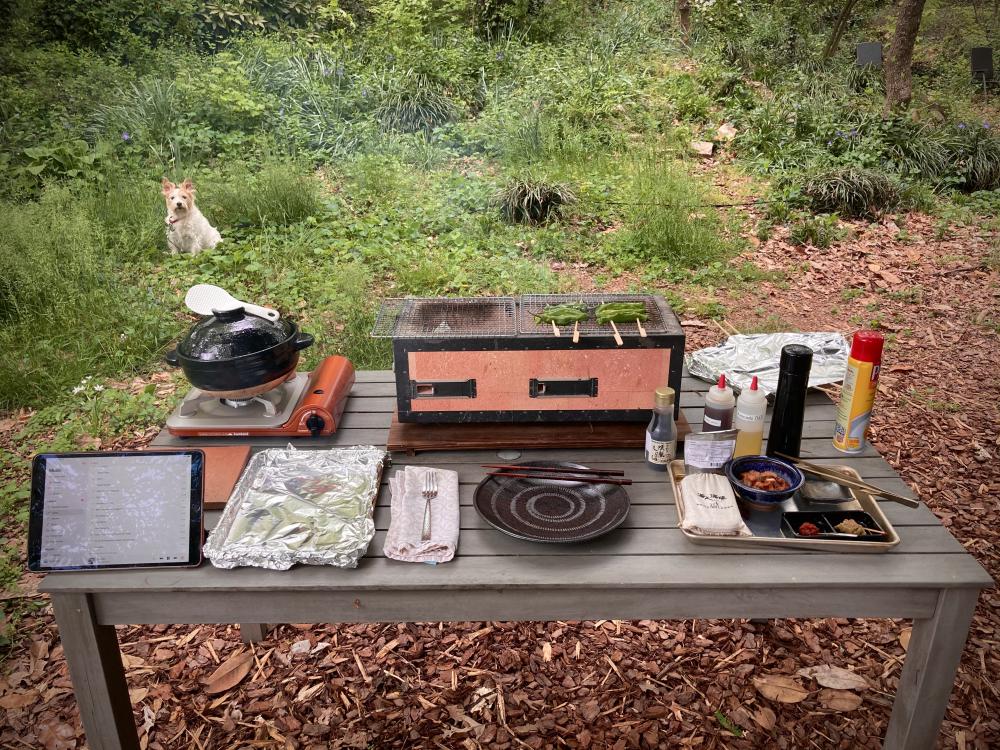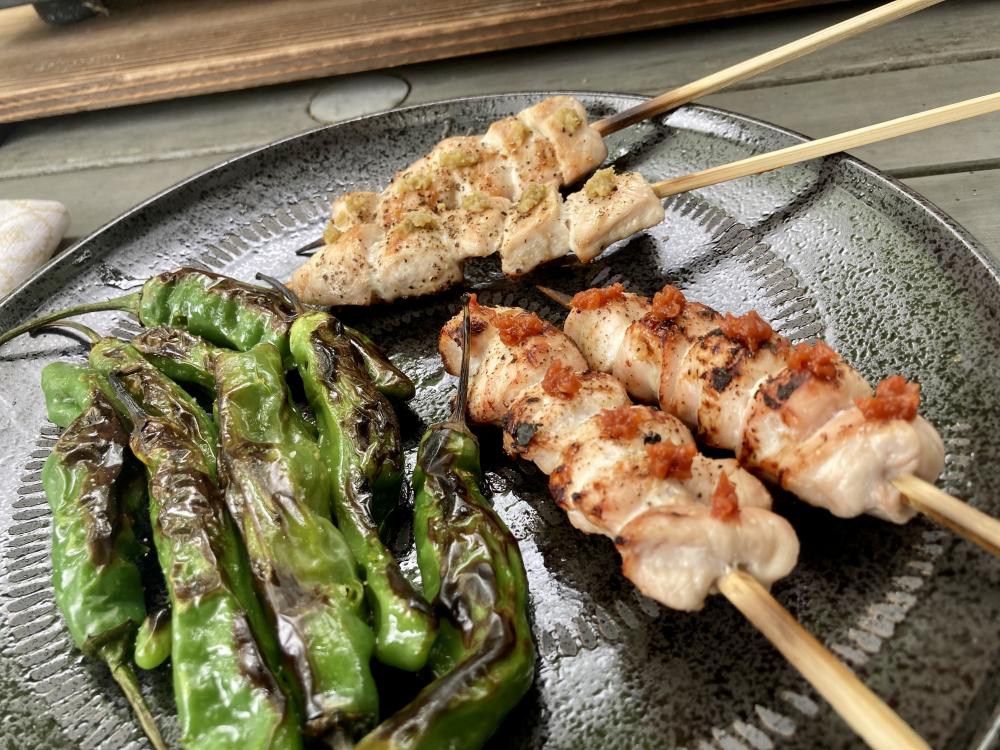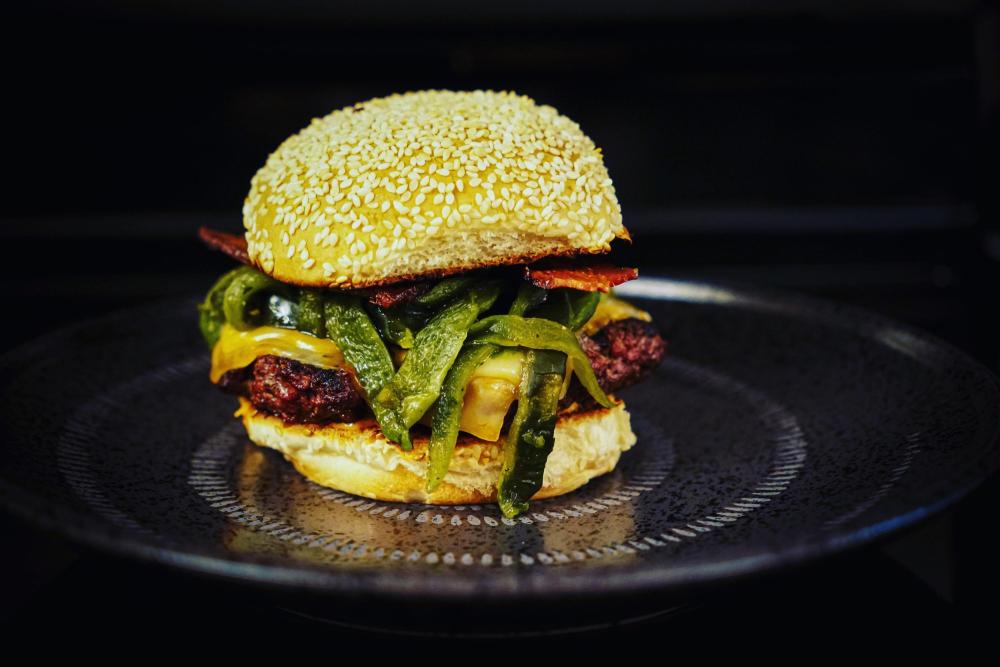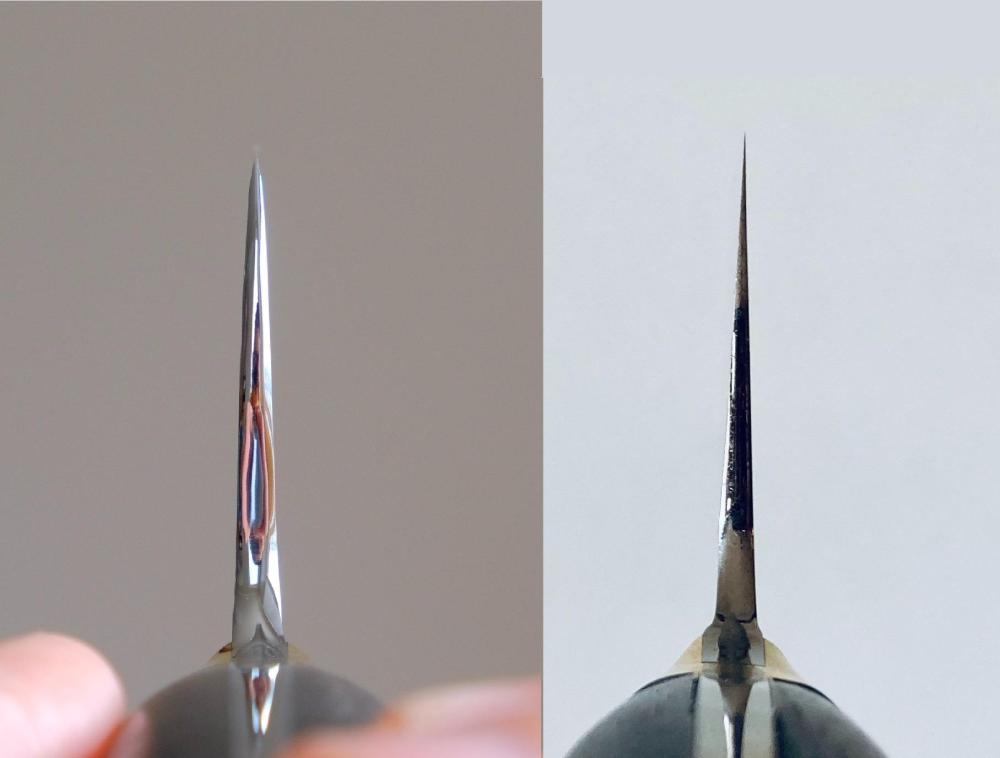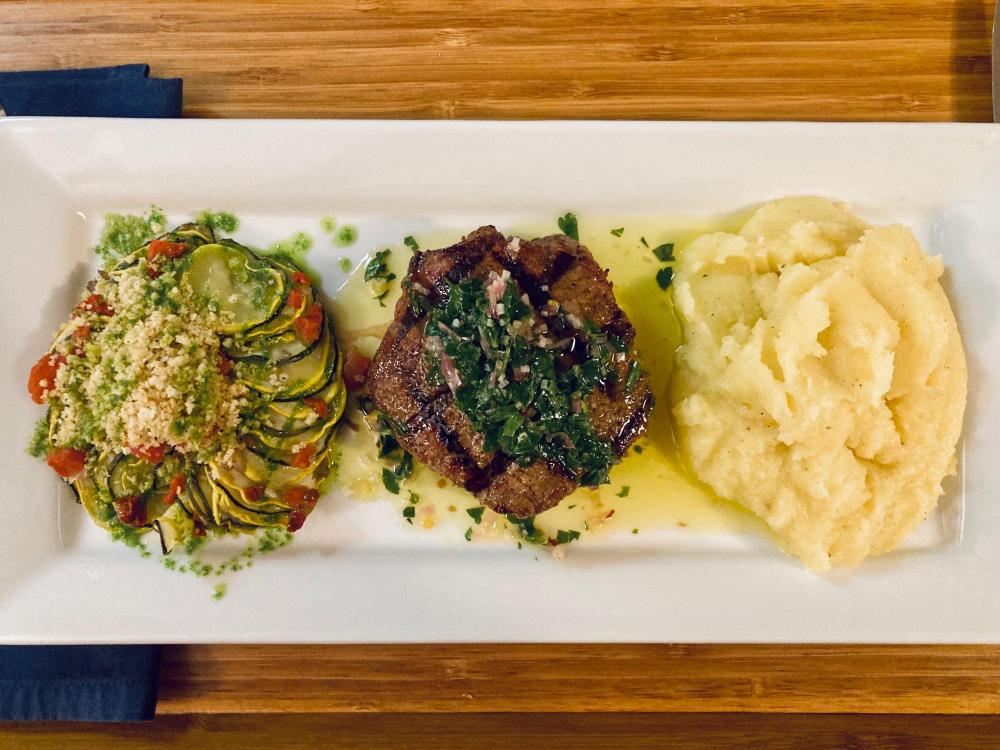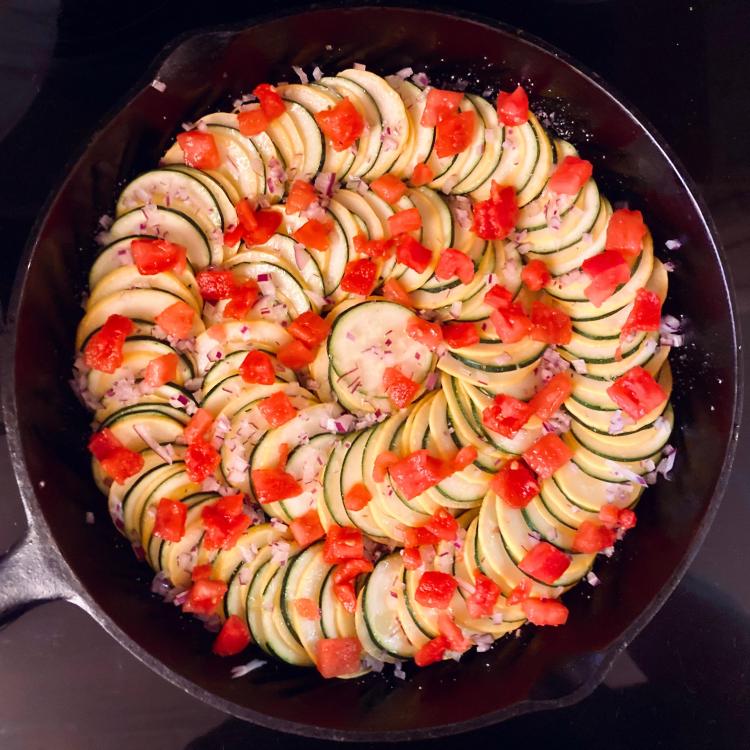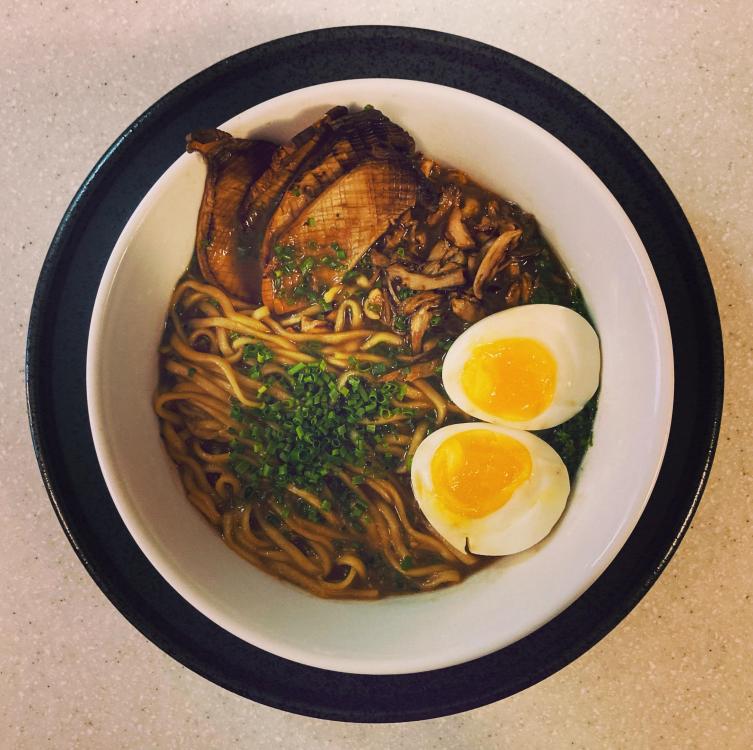-
Posts
1,807 -
Joined
-
Last visited
Content Type
Profiles
Forums
Store
Help Articles
Everything posted by btbyrd
-
Beautiful! The Zwilling/Kramer Meiji line is very nice and I'm sure you'll get a lifetime of joy from it. Such good looking knives! Good find! Some even less expensive knives that are highly regarded in the knife world are the offerings from Kiwi (a Thai brand). They're made from soft stainless (so the edges don't last super long) but the blades are very thin and cut well. You can get a pair of them for like $12 on Amazon. (eG-friendly Amazon.com link)
-
The main problem with a Chef's Choice (and systems like the Edge Pro) is that while it may be able to sharpen the edge, it cannot thin behind the edge and alter the basic geometry of the knife. And geometry is what cuts. Sharpening removes steel, and over time as you sharpen at the same angle, the knife will become chunkier and chunkier behind the cutting edge. And while you might be able to get the cutting bevel cleanly apexed and sharp, it won't cut well if the knife is thick behind that edge -- especially if you're cutting dense items like carrots or potatoes. So while these sharpening systems might be good for maintaining or sharpening an edge, you can't use them to maintain the the geometry of the blade and optimize cutting performance. Jon Broida, sharpening guru and owner of Japanese Knife Imports, gives a good overview of thinning in this helpful video:
-
I meant to say wireless probe thermometer, but my brain turned off for a minute there. I was hoping to get a Combustion Inc. one, but that one is more expensive than I'd like to spend (and it's *still* not yet shipping). I guess I'll end up with a Meater or something else less expensive.
-
Thanks! It's definitely not the same kind of clay, but it might be similar. The Toiro/Iga Mono donabes are from Iga prefecture which is known for its ceramics. The konros are from Suzu on the Noto peninsula. The clay on the konros has a ruddy color from the iron in the diatomite, but the Iga clay is sort of beige. Both seem to have a lot of inclusions or debris that aerates the clay once it's been fired, and that kind of foamy texture is apparently beneficial. Whether or not it's actually geologically similar is beyond my ability to assess. A semi-related pro-tip on the smoker/roaster donabes is to invest in an infrared thermometer to use with them. I have a large smoker donabe (which was *not* inexpensive) and it is underused because I haven't quite figured out time/temp combos and the closed lid makes the system sort of a black box.
-
Binchotan can pop, spark, or explode during the heating process, so unless your kitchen is nonflammable and you have a big hood with makeup air, you’ll want to use it outside. Which isn't so bad. The classic ceramic konro grills are made of thick, porous clay tiles that retain heat as opposed to radiating it out like a metal one. They’re much more efficient, as most of the heat goes straight up toward the food you’re grilling. Here's a link showing how the clay used for these grills is harvested. It's then shaped, fired, and joined using traditional masonry techniques. That should give you an idea of why this style of grill in particular is more expensive than you might expect. If you read Japanese, here's a link to the manufacturer's website. Not so useful for direct ordering, but maybe to find out more and see what other styles they make. If you get one, get some spare nets as well as the fan. Extra nets are useful if something sticks or if you leave one out and it rusts or something. And the fan is quite useful for ramping up the temp of the charcoal. And it's useful for the fire pit and campfires as well. Less intense than the leaf blower, though that does a great job as well.
-
If I had to buy one, I’d get a Panasonic with the inverter technology and button-based interface, like the Wirecutter recommend NN-SN67HS model.
-
I like to roast/braise them in foil with some orange juice. Or to roast them first and finish them with reduced juice. Either way, Orange and beet is a winning combination. It works especially well if you're using golden beets. I once did a dish where I used golden beets glazed with reduced OJ that looked like carrots and purple carrots glazed with balsamic that looked like beets. I think that was my favorite thing I've done with them. Always wanted to roast them in coals.
-
Apart from chili verde, my main use of Hatches is on burgers. This is in regular rotation at our house. We can only get mild ones here, and they’re the same Melissa’s brand all year round. Even though they’re not the best, they still taste great. I love the smoke and the green spice they bring to a dish. I’d love to get a case or two of the good ones sometime!
-
Tastes like snake oil because it’s made with snake oil!
-
@haresfur is on the right track. Choil shots can only tell you so much, and in some cases can be misleading (like in knives that have pronounced distal taper and are therefore much thicker at the heel than at the tip). But the basic idea is that by looking at the choil, you can get some idea of the geometry of the blade. Geometry cuts. One thing you can often tell by looking at a blade this way is how thin the knife is "behind the edge." A knife might have a very sharp cutting edge, yet cut poorly or wedge in hard produce because the knife is too thick near the edge bevel. You also get a sense of the type of grind the knife has (hollow grind, full flat, convex, chisel, s-grind, weirdo hybrid grind, etc.) and how aggressive that grind is, as well as seeing if there is any asymmetry which might cause the blade to steer in one direction when cutting. Of course, a glance at a choil only gives you information about how the knife is ground at the heel; ideally, we could get a 3D scan of each blade and look at "choil-shot-like" cross sections of the blade at different points along the length of the knife. But we're not there yet.
-
That's correct. The previous owner of my knife had it thinned by the fine people at Japanese Knife Imports. Zwilling introduced a "Version 2" of this knife with a micarta handle and improved grind, and that blade is thinner than the V1 but mine is super duper thin. If you're looking for a thin chef's knife that you can buy off the shelf, the Takamura R2 210mm gyuto is an excellent choice. These are one of the classic "lasers" that are very thin and move easily through food. It'd be like the big brother to your VG10 santoku. It's a yakumi pan. Japanese mise en place container.
-
There is no perfect knife, just knives that are better or worse for the job. And while I like this knife a lot, at 8 inches, it's my smallest chef's knife and I wish it was longer. There's a 10" version, but 254mm is a bit long for everyday at home use for me. And because it's so thin, you have to take care cutting harder items. I put a small chip in the edge cutting a baguette with it... but that's the price of hubris. But to actually answer your question, I like using this knife when precision cuts are called for. The tip is extremely thin -- it will flex if you press it with your finger -- so brunoised shallots and garlic are very easy to achieve. And because the blade is only 8" long, the tip is relatively close to your hand, so it's very nimble and controllable. It's a good all around knife on fruits/vegetables, provided they aren't especially large (it's not the best cabbage/melon knife). The blade has a sizable flat spot that's good for chopping, but enough belly that you can rock as well. And the blade is tall at the heel, which I like. The handle is huge for a knife this size and it weighs a lot. Consequently, the balance point is around/behind the bolster, which isn't my preference. The steel (52100) is a simple, reactive carbon steel that sharpens very easily. It's a fun knife for sure, but someone put a lot of time and effort into thinning it so it performs much differently than the off-the-shelf version. You can only tell so much about a knife's geometry from a picture of the choil, but prior to thinning the blade was much thicker at the heel. This is kind of a before/after shot of someone else's new 8" carbon ZKramer on the left and my thinned one on the right. The original knife is much thinner overall than the chunky choil would lead you to believe, but the knife definitely lost a lot of weight (and its original grind) during the thinning process. There's a new version which apparently has a thinner/improved grind but an even heavier micarta handle. I really wish they made a 9" version...
-
The Vic Fibrox is a top recommendation of many knife nerds, and it'd be my top choice if I was trying to buy an inexpensive chef's knife. Though I might try to get a rosewood handled one just because. I wish they made a 9" version.
-
Neither of us really compromised. She prefers her salmon well done, and I prefer my salmon to be ribeye. In the end, we both got exactly what we wanted!
-
His and hers anniversary dinner. Grilled salmon for her, ribeye for me. With summer veg and mashed potatoes.
-
I like to Jaccard SV pork chops. This also facilitates rapid uptake of marinade or brine if you're using a chamber vacuum machine (which will shoot liquid into the pores created by the needling process). But I usually just salt them liberally well before cooking instead of using a wet brine. In any event, Jaccarding definitely makes a positive textural difference... more tender, more juicy.
-
It will work fine. The VP215 is listed as compatible in the item description.
-
Once upon a time, this was the first tin of sardines I ever purchased. I got them at an improbable retailer... a TJ Maxx or a Home Goods or something totally non-grocery. They were inexpensive and intriguing, but I was afraid. I'd never had a deen before, and their reputation didn't make me especially enthused. This tin sat in my cabinet for a couple years, jealously watching my piles of spiced mackerel filets and Ortiz tuna go in and out. But one day I decided to open the tin and I was greeted by three beautiful, burly shiny bois. They shimmered so beautifully. The oil smelled clean and lemony. My reluctance vanished and I took a bite. Whatever trepidation I'd once had was gone in an instant and I realized that I'd been missing out. These aren't my favorite deens by any means, but they're damned good for the $3/tin price that I can semi-regularly get at my local Fresh Market. They tend to be scalier than other producers, but I've come to kind of like that (in context). The lemon flavor comes from the oil in the peel rather than any acid, so the fish have a toothsome and firm texture. Fresh lemon juice helps complete the package. The Matiz spicy deens are my go-to Matiz product though. And now that I'm a deen fiend, I don't buy them as regularly as I buy more some of the more premium brands (lord help me). But this tin has a special place in my heart. I'll never forget how they shimmered. Beauties.
-
Looks great! I want to throw some arugula and lemon juice on there... maybe some pickled red onions or shallots or something. Nice looking deens too!
-
I forgot to include an obligatory shout out to Shin Black noodle blocks (not the cups). Tasty and spicy, but also kind of low quality (fried noodles and freeze dried veg bits that never fully hydrate). These are more likely to give you the "oh no, what did I just do?!" feeling when you crush a bowl real fast. Kind of like a McDonald's quarter pounder with cheese. It's not bad while you're eating it and the flavor is alright, but once you stop eating it, it kind of hangs out with your body/memory longer than it should. Also a fan of Iron Chef Morimoto branded Sapporo Ichiban "Momosan" noodles. I had a six pack of the chicken flavor during the height of the pandemic and really liked them. Good air dried noodles... a bit more dainty in size and texture compared to the Nissin Raohs. And the broth is quite good for instant chicken ramen. Worth a try.
-
My favorite instant ramen is the Nissin Raoh miso flavored ramen. The noodles are air dried and the broth is delicious. A little doctoring can make something incredibly satisfying, like this king trumpet mushroom bowl I made a while back: They also make a shoyu version, which I like (but almost always prefer the flavor of the miso broth) and a porky version which I haven't tried. But the noodles themselves are so good that I use them when I make my own ramen broth, as in this delicious bowl. There's an onsen egg under dem scallions: Another favorite "instant" noodle are the Prima Taste Curry noodles. The noodles take 7 minutes, but the texture is amazing... much more robust than ramen. The broth itself though... that's what sets the Prima Taste apart from others. Each pouch contains a dry powdery mix of some sort of fatty somethingorother and another pouch of awesome curry paste. It tastes phenomenal. Restaurant quality for sure. Spicy hot, but not too spicy hot. PT also makes a delicious laksa noodle that's quite similar, but there's a bunch of dried seafood in the curry paste and it will make your house/office/whatever smell like HOT SPICY SEAFOOD, so I tend to stick to the curry to avoid offending anyone within nose-shot. It's also a bit hotter in spice than the curry. Both products look basically the same in the bowl, so I can't remember if this bowl was curry or laksa. So easy, so delicious. Those are some IQF frozen shrimp I thawed out in water real quick, tossed in curry powder and oil, and did a quick sauté on. You can easily do all that and slice your scallions by the time the noodles are done cooking. I often throw a boiled egg on there. And I'll be the first to admit that I usually eat this over the sink while wearing a napkin bib because that curry is no joke, and the slurping spatter is a serious stain hazard.
-
Unless I'm looking at the image wrong, the wagyu isn't 1.5"-2" thick. I don't think I've ever seen a thick, untrimmed wagyu rib steak offered for sale; the ones I've seen are always sliced quite thin (for a steak), an inch or less. You really don't want to be eating a 2" thick A5 rib steak, unless it's serving 12 people or something. I saw Grant Achatz do a SV wagyu demo on a thicker steak, which he cooked to very rare but then did a super sear on just one side. This gave it a spectrum of doneness from very rare to well done by the crispy edge. But the steak was subsequently carved into tasting portions enough to serve a small crowd. It was definitely a restaurant preparation. But I digress. In the event that it's a slimmer cut, I'd trim it into individual muscle groups and just sear everything hard until it's done. (Be sure to save the larger pieces of fat to make fried rice with. Or render up some crispy fat bits and saute green beans in it. Or whatever... save the fat, it's good.) IMO, there's no big benefit to SV on thinner wagyu rib steaks; you don't need to tenderize them, and you're not going to render much fat (though more will render than conventional beef, as the fat contains more monounsaturated fat). And if they're not super thick, they're relatively easy to cook. Salt, sear, done. The last time I ate some (lower end) wagyu, that's what I did anyway. If you sear A5 in a dry pan, by the time you're done, it'll be shallow-frying in its own fat. And that's okay. You want to render that fat. You need to render that fat. It's still going to be the fattiest beef you've ever had in your life. And that's okay too.
-
It's a Takamura VG10 santoku. They're in stock right now at Mutual Trading Company, Carbon Knife Company, and District Cutlery. I think the cheapest is at Carbon, which also has free shipping.
-
Oops!… I did it again.




